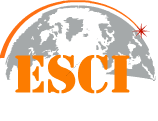The Significance of Heating Profiles and its effect on Sintered
Ag Die Attach Agglomeration, Aggregation and Adhesion
On a Copper Lead Frame Surfaces
Richard Q. Clemente, Blessie B. Basilia, Erik Nino Tolentinoi
Abstract Full text PDF
Full text PDF
Index: 10.183x/A510108
ESCI-MML:183X-0501-0108

A Comperative Study of A New Formula of Ciprofloxacin With Five Marketed Brands
Ahmed M. A.Masaad, Majed Al robaian, Mohammed E. A. Shayoub, and Badraddin M. H. Al-hadiya
Abstract Full text PDF
Full text PDF
Index: 10.183x/B510914
ESCI-MML:183X-0501-0914

A Real Time Static & Dynamic Hand Gesture Recognition System
KSK Swamy, C mahesh, Ch Sandeep Kumar
Abstract Full text PDF
Full text PDF

Face Recognition Using PCA and Wavelet Method: International Journal of Engineering and Science
Srujana, B Laxman, P Suresh
Abstract Full text PDF
Full text PDF

Data Hiding Scheme in Digital Image using Steganographic Techniques
T Maheshwar, Am Krishna, A Sereesha
Abstract Full text PDF
Full text PDF

A Dwt Based Approach for Steganography Using Biometrics
Narsimha, K Srinivasulu, Shanti
Abstract Full text PDF
Full text PDF

Introduction of Pattern Recognition with various Approaches
Tiwary, Shiva ramakrishna,B Sandeep
Abstract Full text PDF
Full text PDF

Age Related Macula Detection Using Trimmed Median Filter (TMF)
Shanti, C Girishkumar, Md Rizwan
Abstract Full text PDF
Full text PDF

Design of Low Power and Area Efficient Carry Select Adder (CSLA) Using Verilog Language
T Maheshwar,Mohammed Abdul Azeez, AN Bhatt
Abstract Full text PDF
Full text PDF

Richard Q. Clemente, Blessie B. Basilia, Erik Nino Tolentinoi
Abstract
Index: 10.183x/A510108
ESCI-MML:183X-0501-0108

A Comperative Study of A New Formula of Ciprofloxacin With Five Marketed Brands
Ahmed M. A.Masaad, Majed Al robaian, Mohammed E. A. Shayoub, and Badraddin M. H. Al-hadiya
Abstract
Index: 10.183x/B510914
ESCI-MML:183X-0501-0914

A Real Time Static & Dynamic Hand Gesture Recognition System
KSK Swamy, C mahesh, Ch Sandeep Kumar
Abstract

Face Recognition Using PCA and Wavelet Method: International Journal of Engineering and Science
Srujana, B Laxman, P Suresh
Abstract

Data Hiding Scheme in Digital Image using Steganographic Techniques
T Maheshwar, Am Krishna, A Sereesha
Abstract

A Dwt Based Approach for Steganography Using Biometrics
Narsimha, K Srinivasulu, Shanti
Abstract

Introduction of Pattern Recognition with various Approaches
Tiwary, Shiva ramakrishna,B Sandeep
Abstract

Age Related Macula Detection Using Trimmed Median Filter (TMF)
Shanti, C Girishkumar, Md Rizwan
Abstract

Design of Low Power and Area Efficient Carry Select Adder (CSLA) Using Verilog Language
T Maheshwar,Mohammed Abdul Azeez, AN Bhatt
Abstract


